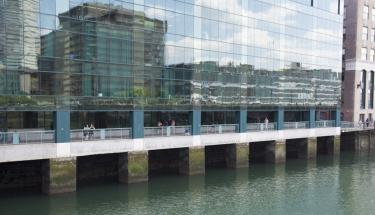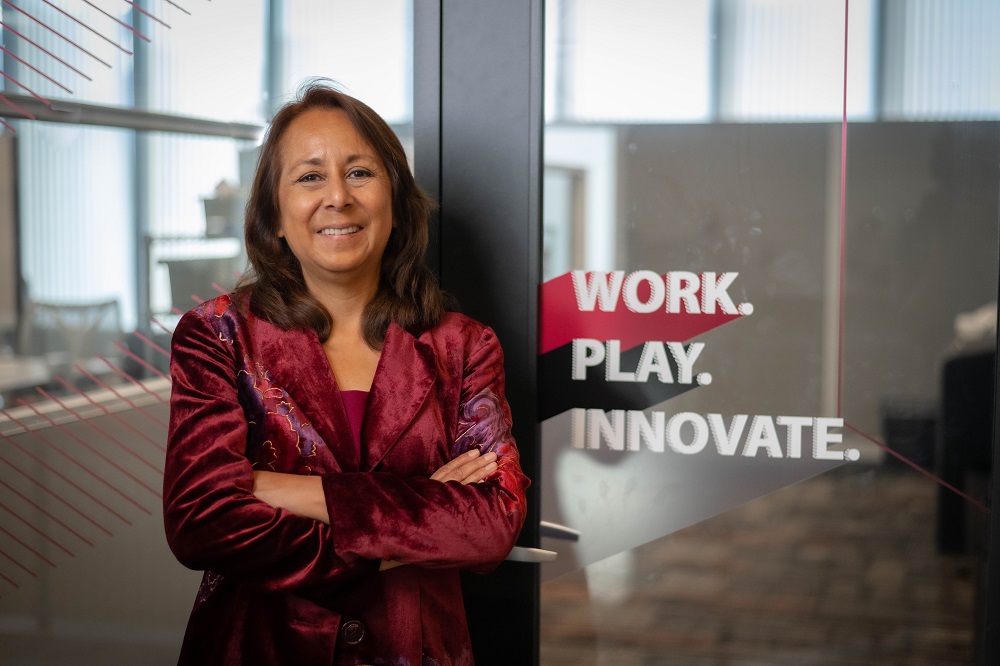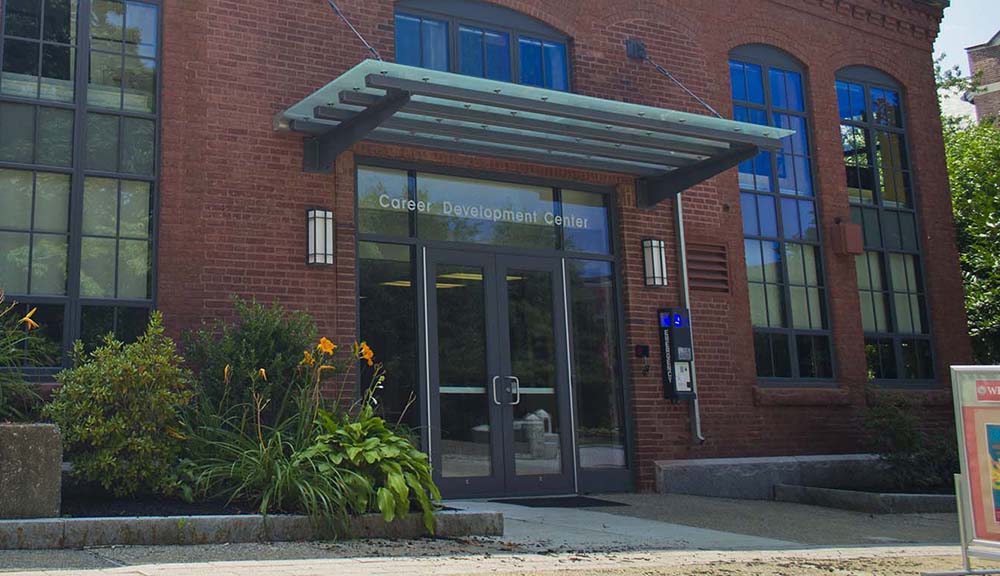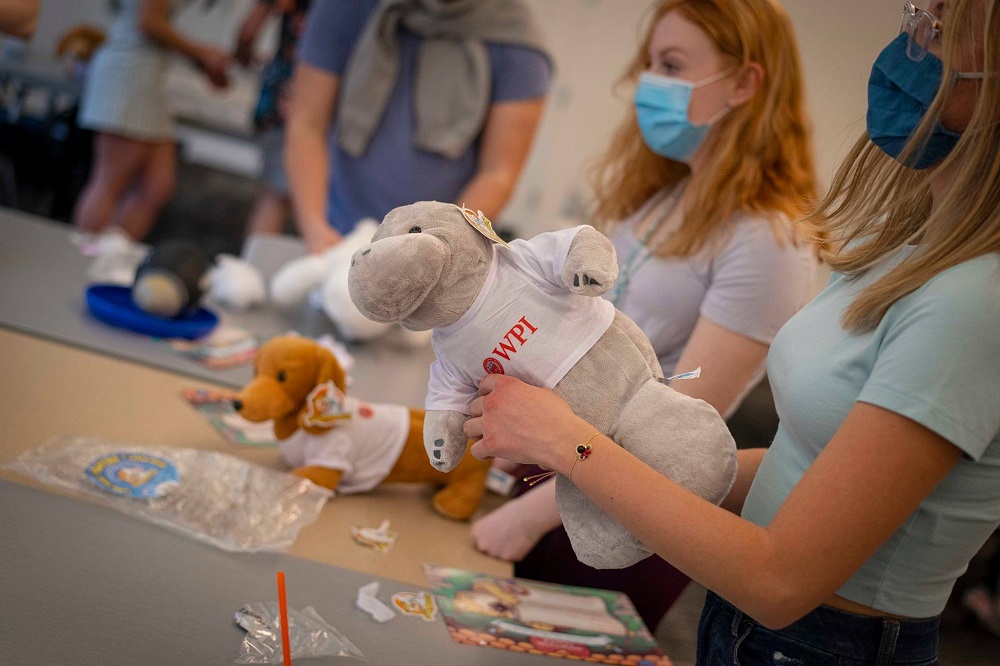As WPI Seaport moves closer to its grand opening on January 31, the 303 Congress Street location in Boston’s booming Seaport District is already shaping up with events and plans to establish WPI’s presence as a critical university partner to support a robust innovation, research, and talent development agenda.
WPI Seaport offers space where WPI faculty, staff, students, and alumni can connect with a wide range of organizations, from established companies to start-ups and early stage ventures, collaborating across industries to develop opportunities that contribute to economic growth and increased competitiveness, says Stephen Flavin, vice president of academic and corporate engagement.
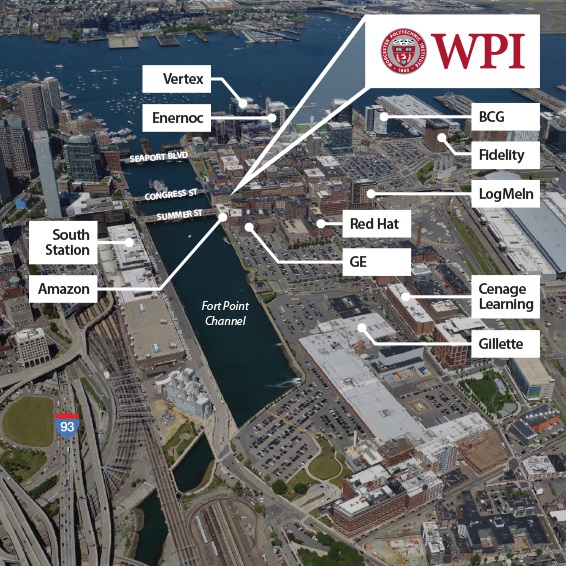
WPI Seaport will be neighbors with companies
including Amazon, Red Hat, and GE.
The grand opening will showcase WPI technology demonstrations throughout the day to formally launch WPI Seaport and introduce it to the world. Dignitaries including Boston Mayor Marty Walsh and Worcester Mayor Joe Petty; WPI trustees, faculty, staff, students, and alumni; and community and higher education representatives will attend the formal ribbon cutting ceremony.
The plan for WPI Seaport, says Flavin, is to connect WPI’s innovation strategy with Boston’s innovation district, allowing this proximity to serve as a catalyst to foster collaborations that will drive opportunities and economic development from Boston to Worcester. WPI Seaport is a mechanism for closing the distance between Boston and Worcester—in miles and mindshare—one that leads to potential partnerships extending beyond the region.
Throughout the day, demonstrations in the tech suites will offer a glimpse into the pioneering work for which WPI is renowned. Faculty with expertise in data science, robotics engineering, biomedical engineering, and FinTech will exhibit their cutting-edge research and techniques. And the community will see the open-concept space, complete with glass walls in the tech suites and closely grouped working spaces, designed to spark collaboration and innovation.
With its central location in the Seaport District, this space allows the university a new method of delivering and participating in leading-edge endeavors. “WPI Seaport presents so many possibilities for connecting our industry partners and students,” says Steve Koppi, director of the Career Development Center (CDC). “For example, CDC is planning a Start-Up Showcase this spring at the Seaport location in collaboration with Think B1G, where fast-growing, high-tech companies will pitch their case for our students to join them—sort of a reverse career fair concept.”
While many undergraduate and graduate students will engage with nearby industry for projects and research, the location offers a thriving environment for students to launch careers and the university plans to build on that. “CDC is in discussions with consulting firms like Think B1G that will help our students connect with opportunities in the start-up and fast-growth company space,” says Koppi.
“The revitalization of the Seaport and the organizations that are increasingly calling it home, are very much synergistic with WPI’s capabilities—developing outstanding talent, supporting research opportunities, building multifaceted partnerships. These activities, and more, make the WPI presence in the Seaport an ideal match.” -Stephen Flavin
Flavin says the feedback he has received since WPI signed the seven-year lease on the space last summer indicates the WPI community finds the new location a great fit for WPI’s mission, goals, and ambitions.
“From the initial announcement," he says, "I’ve had dozens of emails from alumni who are interested in understanding the use of the space and how they may play a role in shaping future use, wanting to visit the space, and even how they, personally, can work in the space, The revitalization of the Seaport and the organizations that are increasingly calling it home, are very much synergistic with WPI’s capabilities—developing outstanding talent, supporting research opportunities, building multifaceted partnerships. These activities, and more, make the WPI presence in the Seaport an ideal match.”
To help further develop a “use” strategy for the location, WPI’s Seaport Advisory Group (SAG) was formed in summer 2017. Composed of faculty, staff, and students, Flavin says the group serves as a brainstorming group and a sounding board on the highest and best use of the space. SAG ideas proposed include plans for admissions and recruitment events, seminars and symposiums, and Boston Project Center activities.
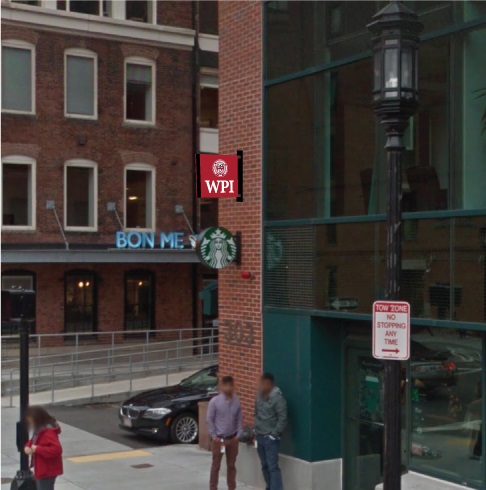
WPI Seaport's location at 303 Congress Street.
“CDC envisions hosting virtual interviews, where employers can meet at the Seaport location and interview students here at WPI,” says Koppi. “All these possibilities jibe with CDC’s Fast-Growth Initiative aimed at engaging more small, fast-growing high-tech companies to recruit our students and graduates.”
Dean of graduate studies Terri Camesano plans to host Innovation Chats this spring, inviting industry leaders to share their knowledge and perspectives with grad students and alumni with specific interest in the topics. Hugh Brock, director of engineering at RedHat, will present in February, and Tom Ryden, executive director of Mass Robotics, will speak in April.
“The Seaport provides a great opportunity for us to be able to connect our MS and PhD students with leaders from industry,” Camesano says. “The first topics selected, Robotics and IT/software, are fields with strong and growing graduate programs at WPI; they represent areas where WPI wants to become more engaged with industry.”
With a definite strategic focus on establishing a presence in Boston to expand opportunities and showcase WPI’s innovative educational mission, the forward-thinking approach positions WPI students for new paths.
“The idea is to give graduate students a networking opportunity with one another," says Camesano, "as well as with alumni and a high-level speaker from industry, in order to help the students understand the opportunities open to them in their future career.”
As the SAG continues to explore the possibilities within WPI Seaport, there’s no doubt the location holds tremendous promise. There’s potential for alumni breakfasts, pitch contests, and even hackathons. The space will also help WPI build valuable partnerships with Seaport-connected organizations like MassMEDIC, MassRobotics, MTC/AUVSI, GE, RedHat, Vertex, and Amazon.
- By Julia Quinn-Szcesuil
